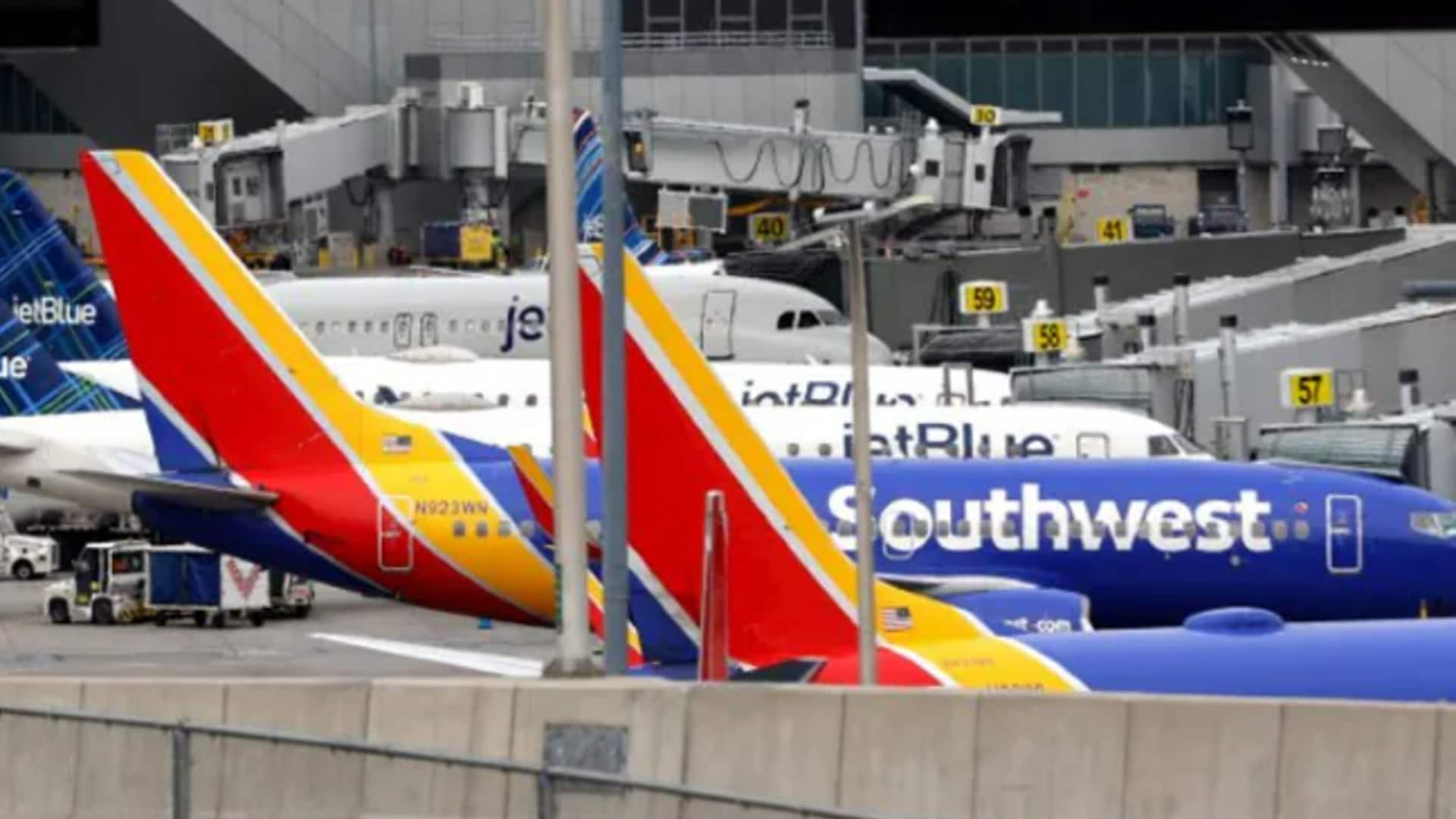
Staffing woes, government shutdown cause widespread flight delays across US
What's the story
The US is witnessing major flight delays due to a shortage of air traffic controllers. The Federal Aviation Administration (FAA) has reported that nearly half of the 30 busiest airports in the country are affected by this issue. The problem has been exacerbated by the ongoing federal government shutdown, which is now in its 32nd day.
Impact assessment
Controller shortage most severe in New York
The controller shortage is most severe in New York, where 80% of air traffic controllers are absent. This has contributed to flight delays at Austin, Newark, and Nashville airports. At least nine FAA facilities reported staffing issues earlier in the day, with more delays expected later at Houston and Dallas area airports.
Travel disruptions
Thousands of flights delayed, canceled
By 12:30am ET, aviation tracking site FlightAware reported that 2,200 US flights had been delayed and 300 canceled. US Transportation Secretary Sean Duffy warned of more flight delays in the coming days. "Coming into this weekend and then the week after, I think you are going to see even more disruptions in the airspace," Duffy said on Fox News's America's Newsroom.
Industry response
Airlines urge Congress to pass stop-gap funding bill
Major airlines, including Delta Air Lines, United, Southwest Airlines, and American Airlines, have called on Congress to pass a stopgap funding bill. The shutdown has forced 13,000 air traffic controllers and 50,000 Transportation Security Administration officers to work without pay. The situation has led to flight delays due to controller absences and affected thousands of flights nationwide.
Staffing crisis
FAA short of target staffing levels
The shutdown has worsened existing staffing shortages, threatening to cause widespread disruptions similar to those that ended a 35-day government shutdown in 2019. The FAA is about 3,500 controllers short of its target staffing levels. Many were already working mandatory overtime and six-day workweeks before the shutdown began on October 1 due to a stalled federal funding bill in Congress.